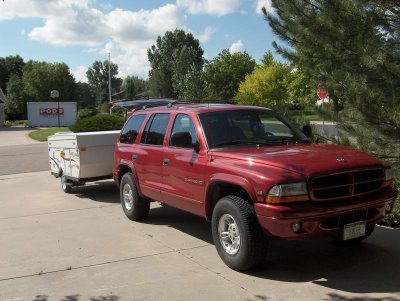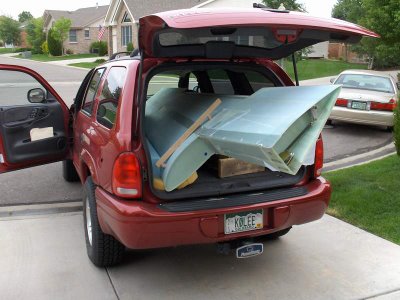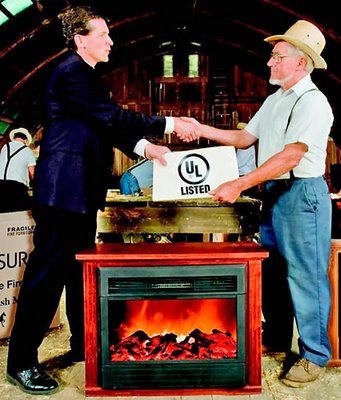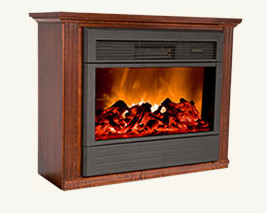
I’ve written a lot about renewable energy and so people might classify me as an environmentalist, a tree hugger, if you will. I thought it would be time to address the 4700 lb. elephant in the garage. That’s right, like many Americans, I own a Sport Utility Vehicle (SUV). It’s a 1999 Dodge Durango that I bought 10 years ago and I hope to be able to keep for at least another 10 years.
It seems that over the past few years, SUVs have been getting a black eye in the court of public opinion so I wanted to write a little about why I think they remain so popular in spite of their status as gas guzzlers.
There are those who think that anyone who drives an SUV is an enemy of the environment and deserves to be vilified for it. After all, most commuting is done solo, and it is wasteful to be carrying all the weight of an SUV simply to move a single person around. It’s almost as if SUV critics feel everyone should be required to use either public transportation or a compact vehicle that gets at least 40 mpg? My Durango gets 14.7 mpg average, 19 mpg highway. In warm weather, I ride a motorcycle which gets about 50 mpg and that helps to improve my annualized personal fuel economy. In the past few years, I’ve used the motorcycle for nearly half my annual miles driven. A small economy car could provide a similar fuel economy as my combination of SUV/motorcycle, but that solution doesn’t work for me. I prefer having an SUV and a motorcycle to having a small economy car.
Why are SUVs still outselling hybrids more than 10:1 and were doing so even when recent U.S. gas prices climbed to over $4/gallon? I’d say that much of the reason is because the SUV has fewer limitations than most other vehicles. They just seem to be able to ‘do it all’. For example, there have been several instances where the Durango has allowed me to get home in snow storms that would have been unthinkable in a 2-wheel drive vehicle. Each time that’s happened, the peace of mind that 4WD provided more than paid for its increased operating cost. Many critics of SUVs will point to the fact that SUV owners rarely, if ever, take them off the road. But if you live in any state that gets regular home delivery of snow, you will likely put your SUV in 4WD at least a few times per winter season. For a one-week period around Christmas a few years ago with well above average snowfall, SUVs were the only vehicles with enough ground clearance to make it out of our neighborhood. The Durango also can hold 7 adults, making it possible to leave an extra car in the parking lot when carpooling. I have carried 4′ x 8′ sheets of plywood in it and filled enough wood to rebuild a deck. I carried the fuselage of my airplane inside it as well as its 300 lb. engine and each of its wings, one at a time, of course. I’ve towed a camper with it. I’ve actually driven it off-road along with a 4 person crew to repair a ham radio repeater at the top of a mountain. It’s truly a versatile machine with its only limitation being its fuel economy when compared to a compact car.

A 300 lb. aircraft engine fits in easily…

…and so does an 11-foot airplane wing
When I was younger I was a boy scout. The boy scout motto is ‘be prepared’. An SUV helps its owner to be prepared for virtually anything. Sure, there are many missions where I could use a more fuel efficient vehicle, but I don’t want to own multiple cars, one for each potential mission. Our garage is only big enough for two cars and a motorcycle. And just owning a vehicle costs money, even if you don’t drive it. Each vehicle has a capital expense, which needs to be amortized over the miles driven in its lifetime, along with insurance, ownership taxes, and periodic maintenance. Sitting parked in your garage, a vehicle costs money whether it’s used or not. And the capital expense of owning a vehicle usually constitutes a larger per mile expense than its fuel bill.
My wife has a BMW 328i sedan that gets 28 mpg, about twice the fuel economy of the Durango. It’s a great car and a lot of fun to drive. When we go on long trips in nice weather, we often take it instead of the SUV. Recently, we flew to the east coast for a week and when contemplating which vehicle to leave at the airport, we both independently arrived at the same conclusion. Since it was winter, and we didn’t know what kind of weather to expect when we returned, we chose the Durango. Sure enough, when we returned we landed late at night in a blizzard. But it was no problem to get home in the Durango. It would have been a harrowing, white-knuckle, 2-hour drive if we had instead chosen the sedan, and it could have ended up in a ditch in need of a tow, like several others we saw on the way home.
The major costs of owning a car can be divided into the categories of purchase price and operating costs. Operating costs are comprised of items such as insurance, taxes, maintenance, and fuel. The annual fuel cost for most vehicles is surprisingly low in comparison to these other costs. Compared to the purchase price, fuel may be just a small percentage per mile. That’s why people who can afford to spend $60K on a 10-mpg Hummer H2 are not deterred by having to spend $5K per year for the fuel. They could instead have a 45-mpg hybrid along with a $1000 annual fuel bill but it’s a not an issue if they can afford the Hummer’s gas. Now I know there are some who think that fossil fuels belong to everyone and it’s not fair for someone to use more than their ‘fair share’. I have to wonder when a resource is finite and irreplaceable, what would constitute a reasonable ‘fair share’ per person. Because I use my motorcycle in the warmer months, my SUV has been averaging less than 5,000 miles a year, and so it’s actually burning less fuel annually than a compact car racking up 15,000 miles a year. A vehicle’s fuel economy isn’t the only factor that determines how much of an impact someone is having on the environment. A person’s transportation-related carbon footprint also includes the amount of travel one does annually.
If your job requires you to travel frequently by jet, you may be using large quantities of fossil fuels even if you don’t own a car. I’ve known people who fly more than 100,000 miles a year and don’t seem to realize that it also impacts their overall energy consumption and hence their carbon footprint. I find it particularly ironic when energy efficiency evangelists jet all over the world spreading the gospel about conserving energy as they themselves seem to be unaware that their air travel is generating a huge carbon impact. It’s a case of ‘do as I say, not as I do’. Sometimes they buy carbon credits, thinking it makes up for their ‘unavoidable’ energy use. That seems to me as nothing more than purchasing indulgences to assuage their guilt.
Public transportation vehicles use fossil fuels in large quantities, although many public transportation proponents don’t seem to realize it. Commercial jets typically average 50 miles per passenger per gallon, buses around 80, and trains around 200. These are typical values, not the maximum theoretical numb
ers, which would assume 100% seat utilization (source). Most public transportation vehicles need to have excess capacity and thus travel many miles with empty seats. A person who flies enough to make it to an airline’s annual 100K club uses more oil than a Hummer driver racking up 20,000 miles per year.
Sometimes when people talk about hybrid cars and public transportation, they seem to feel that if everyone would just start using these modes of transportation exclusively, both the fossil fuel depletion and global warming problems would be solved. They won’t. Better fuel economy just pushes the problem out a few years since those modes of transportation consume fuel too. And since these more efficient modes are often erroneously considered to be virtually carbon-free, people may be induced to travel more miles annually.
We all like to have our mobility. Our modern society is defined by it. If we had to travel exclusively by foot or on horseback, you can rest assured we’d do a lot less of it. I’ve certainly done my share of traveling and so I’m in no position to criticize others for their travel habits.
So if you own an SUV, I recommend you keep it. If you feel guilty about it, you can try to drive it fewer miles per year, if possible. You can augment your travel needs with a motorcycle, scooter, or bicycle. Or work from home when you can. Having an SUV will allow you to be prepared for anything and keep you from joining the ranks of those who smugly berate SUVs and their owners with adjectives like ‘revolting, insidious, and despicable’. 🙂







